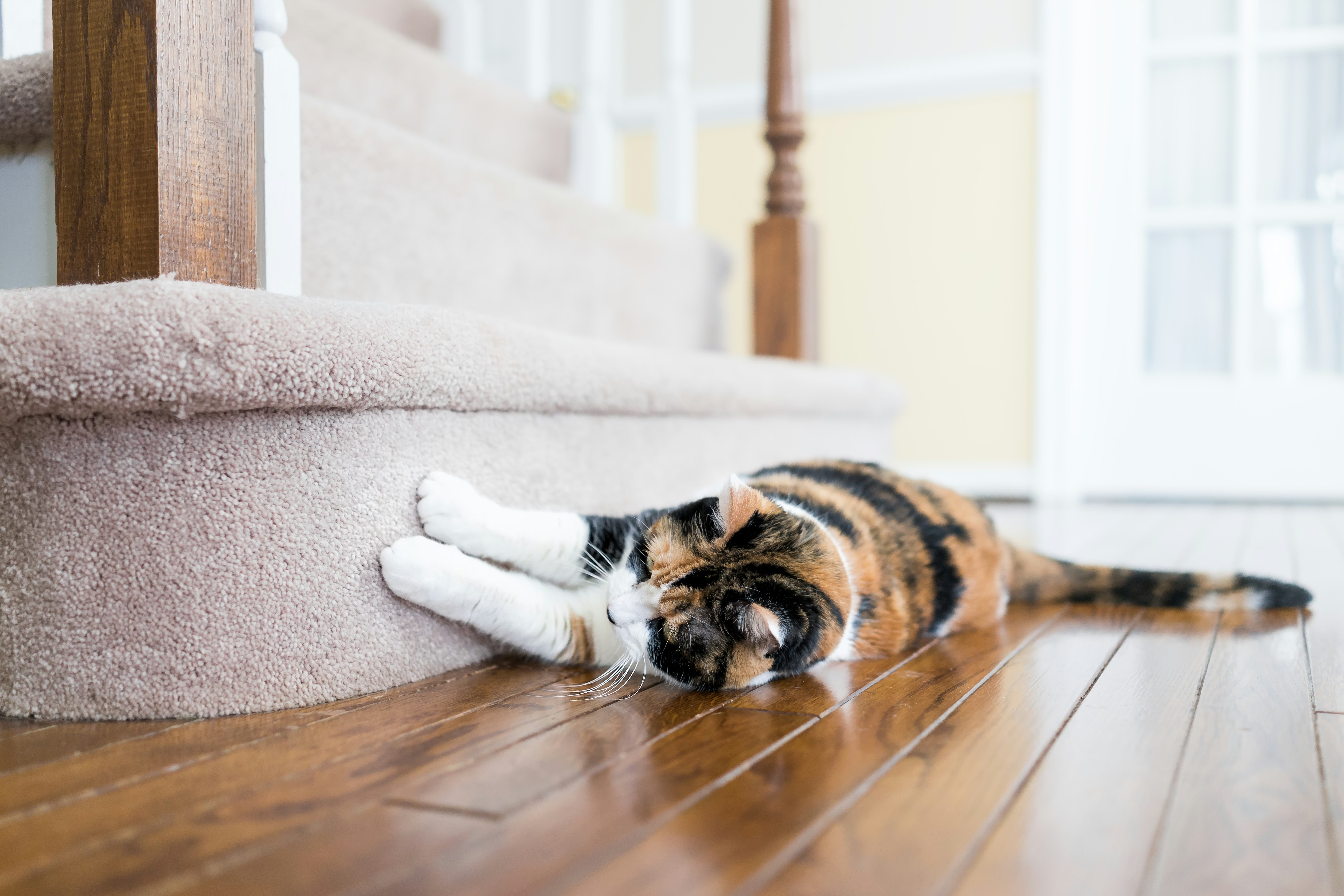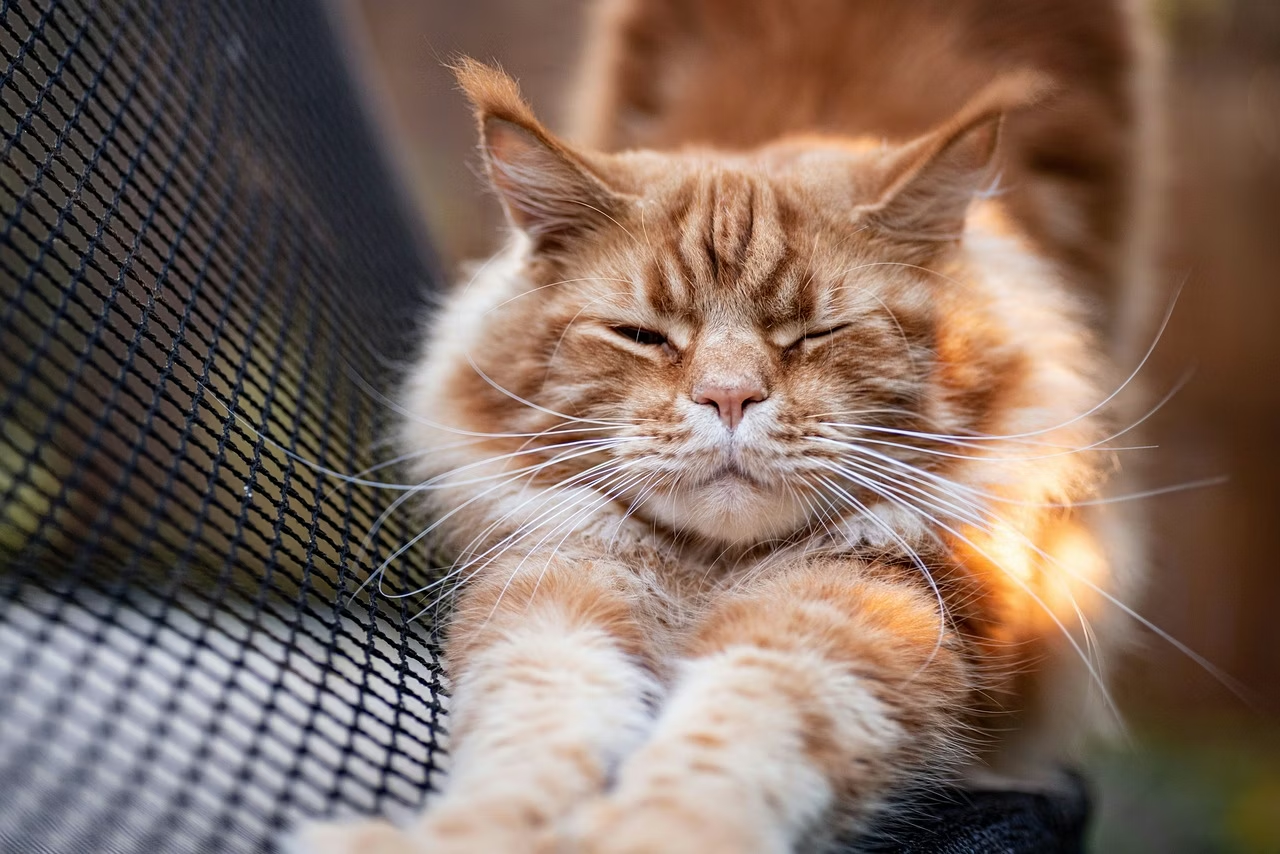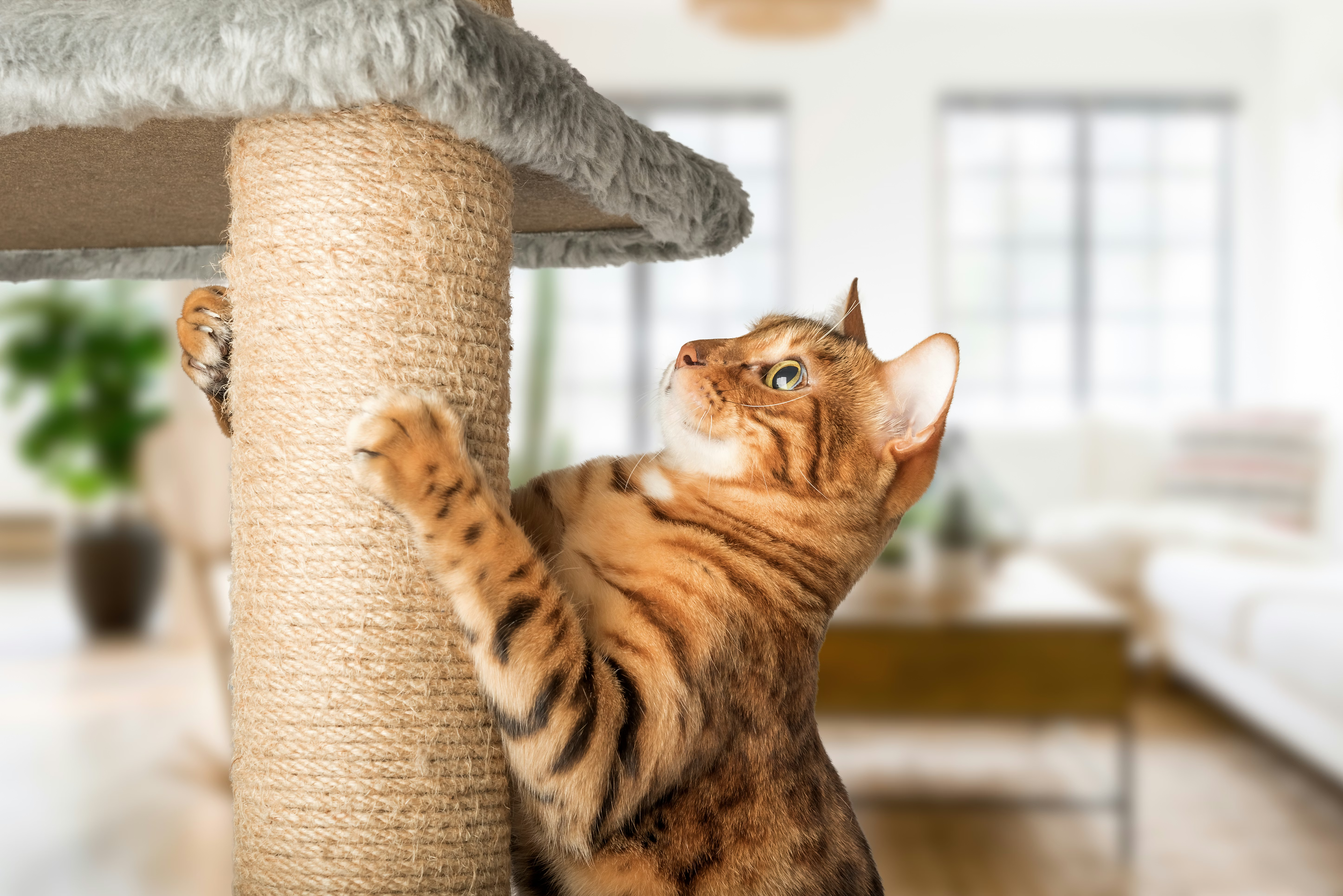As a cat parent, you’ve probably caught your kitty scratching your furniture, rugs, or curtains. And chances are, what you saw didn’t make you happy. But the reality is that scratching is a natural behavior for cats and provides them several benefits. So instead of getting frustrated, let’s take a few minutes to break down why cats exhibit this behavior and what you can do to direct it at more appropriate targets.

Why do cats scratch?
Scratching is good for a cat’s overall health, impacting their physical and mental well-being. Following are a few of the main reasons cats scratch.
- They are marking their territory. Cats have scent glands in their paws. When they scratch, they leave behind markers that let other cats know they’ve claimed that territory. And in case the scent isn’t enough, the visual marks (or shredded material) created by scratching are another way to send the same message. Marking territory also helps cats feel reassured that the area is safe so they feel secure in their homes.
- They are maintaining their claws. Think of it as a kitty pedicure. Scratching helps cats shed the dead layers of their claws, keeping them strong and healthy. It also reduces the likelihood of painful ingrown nails.
- It’s an emotional release. Scratching is a natural outlet for cats to relieve stress, frustration, and boredom. After all, cats can’t meditate or do adult coloring books.
- It feels good! If there’s one thing cats love, it’s a good stretch. Scratching helps them stretch and flex the muscles in their paws, limbs, back, and body.

Redirecting scratching behavior
Because scratching offers cats so many benefits, it’s not a behavior you should try to stop. However, that doesn’t mean the object of their scratching (and subsequent destruction) should be your favorite armchair. To prevent your furniture or carpet from bearing the brunt of your cat’s scratching instincts, try these techniques to steer them toward a more appropriate outlet.
Provide alternative scratching surfaces.
Invest in sturdy, cat-friendly scratching posts or boards and place them strategically near furniture that is a known scratching target. Having an option on every level of the house is a good idea. And while you may want to stick the scratching post in a dark corner of the basement or a backroom, if it’s an area of the house where you don’t want to spend a lot of time, chances are your cat doesn’t either. It’s best to place them in areas where your cat genuinely enjoys hanging out.
It’s a good idea to provide several options in terms of shape and surface. Have some that are vertical and some horizontal ones. You can also experiment with ones covered in corrugated cardboard, rope, or other cat-friendly materials. If a particular shape or surface isn’t enticing your cat, swap it out for a combo that works better.
Encourage exploration
Make the scratching posts more enticing by sprinkling catnip or using toys to pique your cat’s interest. Positive reinforcement, such as treats or praise, can also encourage them to use the designated scratching areas.
Deter inappropriate scratching
Use double-sided tape or aluminum foil on furniture or other off-limits surfaces. Cats typically don’t like the feel or sound of these products and are less likely to scratch if it means coming in contact with one of them.
You can also try specially designed plastic or vinyl guards for furniture. Cover these guards with a tight-fitting sheet while retraining your kitty to scratch appropriate surfaces.
And lastly, try applying artificial pheromone diffusers or sprays directly to areas that your cat is scratching.
Keep nails trimmed
Regular nail trims can help reduce the damage caused by scratching. Your veterinarian or a professional groomer can give tips on how to clip your cat’s nails. Soft vinyl nail covers are also available.

The risks associated with declawing
If your cat’s scratching causes a lot of destruction in your home, you may wonder if surgically removing their claws is an appropriate option. While declawing is still done, a growing number of veterinary practices have opted out of performing the procedure out of concern for the impact on cats’ welfare. Additionally, many countries, 2 US states, and multiple US municipalities have banned the practice—with others considering similar laws. While it may seem like an easy and permanent solution, declawing has serious risks including:
- Chronic pain and discomfort. Declawing is an extremely painful procedure involving amputating each toe’s last bone. There can be surgical complications, and it can cause long-lasting physical and emotional distress for your cat.
- The inability to defend themselves. Cats rely on their claws for self-defense. Declawing leaves them unable to protect themselves in a threatening situation. Therefore, it’s unsafe for a declawed cat to go outside.
- Altered behavior. Declawing can lead to behavioral changes such as litter box aversion, increased aggression, and depression. Cats may resort to biting as a defense since they no longer have claws.
- Mobility limitations. Cats use their claws when climbing or walking on narrow or unsteady surfaces. Removing claws hampers their ability to climb and balance properly on things like fences or railings. It also limits their ability to get in those excellent stretches we discussed earlier.
Final thoughts
Understanding and accepting scratching behavior is crucial for a cat’s overall health. So instead of focusing on how to stop scratching altogether, embrace your cat’s scratching instinct and provide them with suitable alternatives. That approach will result in a happy kitty and a stronger bond between you and your feline friend.














